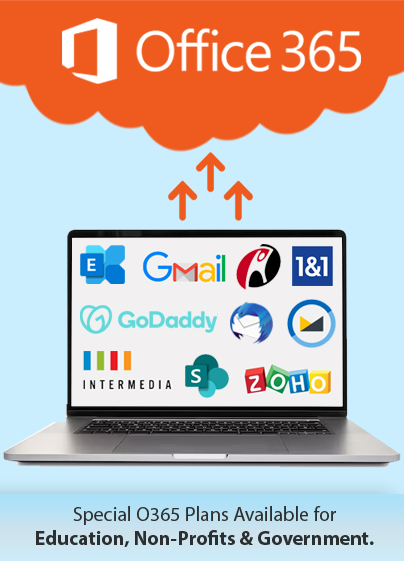Exchange 2010 to Office 365 Migration
- Introduction
- Key Considerations for Exchange 2010 to Office 365 Migration
- How Long Will It Take to Complete Exchange 2010 to Office 365 Migration?
- What are the Available Migration Options?
- How to Ensure a Successful Exchange 2010 to Office 365 Migration?
- Why Apps4Rent for Exchange 2010 to Office 365 Migration?
With the extended support for Exchange 2010 until October 13, 2020, Microsoft has provided users extra time to plan and execute a migration from Exchange 2010 to Office 365. This transition offers numerous advantages, including cost savings and access to a wide range of applications and services within the Office 365 suite, ensuring more straightforward integration with Exchange Online and Outlook. In this blog, we will discuss the critical aspects of the Exchange 2010 to Office 365 migration and the importance of selecting the right migration path.
Key Considerations for Exchange 2010 to Office 365 Migration
The steps for migrating from Exchange 2010 to Office 365 can vary based on your current on-premises Exchange Server version. Office 365 offers a range of migration methods to suit various needs. The supported migration methods include:
- IMAP Migration: This method involves migrating data using the Internet Message Access Protocol.
- Cutover Migration: A cutover migration is a method where you move all mailboxes and data at once to Office 365.
- Staged Migration: Staged migration allows you to migrate mailboxes in batches to Office 365.
- Third-Party Migration: If you prefer, you can use third-party migration tools and services for a more customized migration process.
- Hybrid Deployment: A hybrid deployment is an option for organizations that want to maintain a combination of on-premises Exchange and Office 365.
The specific approach you choose will depend on your organization’s requirements and the version of the Exchange Server you’re currently using.
Factors Affecting the Migration Process
The time required to migrate from Exchange 2010 to Office 365 varies widely, from hours for simple mailbox transfers to months for complex migrations involving many mailboxes and other elements. When planning your Exchange 2010 to Office 365 migration, consider these key factors:
- Migration Approach: The method you choose for migration plays a pivotal role in determining how long the process will take.
- Data Characteristics: The type, volume, and density of the migrated data are crucial factors influencing migration duration.
- Migration Server Performance: The performance of the servers involved in the migration can impact the speed and efficiency of the process.
- Network Configuration: The network setup and bandwidth can either expedite or hinder the data transfer.
- User-Throttling Policies: Your organization’s policies regarding user throttling can affect the pace of the migration.
Due to these variables, the efficiency of migrating from Exchange 2010 to Office 365 can differ significantly even when following the same migration path for similar mailboxes.
How Long Will It Take to Complete Exchange 2010 to Office 365 Migration?
The best way to determine how long it will take to migrate is by scheduling a test migration and estimating the migration throughput and the average queue time. Here is a rough estimate of how long it will take for the migration to complete.
- Fewer than 1000 mailboxes, 5-14 days.
- 1000-5000 mailboxes, 10-30 days.
- 5000-10000 mailboxes, 20-45 days.
- 10000-50000 mailboxes, 30-60 days.
- 50000-100000 mailboxes, up to 3 months.
- >100000 mailboxes, up to 6 months.
There may be variations in these numbers based on the complexity of the mailbox profile.
What are the Available Migration Options?
Explore diverse migration scenarios to find the right path for your needs, whether it’s transitioning from Exchange 2010 to Office 365 or other options.
- IMAP Migration: Typically used for transferring mailboxes from services like Gmail, but not recommended for Exchange 2010 migration to Office 365. Suitable for moving emails with no service interruption.
- Cutover Migration: Ideal for organizations with fewer than 2000 mailboxes (150 for optimal performance). Admins can migrate calendars, contacts, and other items to Office 365 mailboxes using directory synchronization.
- Staged Migration: Suited for organizations planning to move on-premises mailboxes, calendars, and contacts over several weeks or months in batches. Organizations with many mailboxes often prefer it, which may involve minor service interruption.
- Third-Party Migration: Useful for specific needs, such as migrating public folders to Exchange Online. Third-party tools can automate parts of the migration process and provide flexibility, but they can be costly, especially for smaller tenants, and their effectiveness varies.
- Hybrid Migration: Involves deploying on-premises infrastructure and Exchange Online simultaneously. Users can share calendar items and global address lists (GAL) between organizations, implementing a more integrated approach to migrate Exchange 2010 to Office 365.
Express Migration for Office 365
The Express migration method utilizes the minimal hybrid option within the Exchange Hybrid Configuration Wizard to swiftly migrate Exchange 2010 to Office 365 in weeks or less. It’s ideal for businesses with at least one on-premises Exchange Server 2010 looking to migrate to Exchange Online without needing directory synchronization. Importantly, this method ensures uninterrupted service.
Hybrid Office 365 And Exchange Server 2010 Deployment
This deployment approach is ideal for organizations with over 150 mailboxes looking to migrate from Exchange 2010 to Office 365 gradually. In this method, both on-premises Exchange Server 2010 and Office 365 coexist, facilitating mail routing with the same domain namespace. It also enables the sharing of calendar and other Outlook items, centralized control over mail flow, message tracking, and archiving. While it’s not a direct migration to Office 365, it’s an essential interim step for organizations with complex on-premises infrastructures that cannot be quickly retired during their transition to the cloud environment.
How to Ensure a Successful Exchange 2010 to Office 365 Migration?
Here are the steps you should follow in preparing for an Exchange 2010 to Office 365 migration:
-
Migrate Exchange 2010 to Office 365
Start with a comprehensive migration plan to ensure a successful Exchange 2010 to Office 365 migration. This plan should guide you through every step, from the initial stages to the final mailbox migration to eventually decommissioning your on-premises Exchange environment.
-
Microsoft Tools
Utilize Microsoft’s tools for a smooth exchange 2010 migration to Office 365. The Hybrid Configuration Wizard helps establish a connection with Office 365, while the Microsoft Remote Connectivity Analyzer verifies your connection to the correct Exchange environment.
-
Third-Party Tools
Explore third-party migration tools for an efficient Exchange 2010 migration to Office 365 process, simplifying the complexity.
-
Off-Peak Migration
Minimize disruption by scheduling mailbox migrations during off-peak hours when bandwidth usage is lower. Monitor logs for issues and migrate small user groups to mitigate problems during the Exchange 2010 to Office 365 migration.
-
Testing
Thoroughly test the email flow after establishing the Office 365 connection, starting with a small user group to gather feedback before proceeding to all users during the exchange 2010 to Office 365 migration.
-
Rollback Plan
Develop a rollback plan for critical issues when you migrate Exchange 2010 to Office 365, which typically involves halting the migration, restoring the old Exchange environment, reverting DNS settings, and verifying on-premises functionality.
-
Post-Migration Verification
After you migrate from Exchange 2010 to Office 365, verify the successful migration of all mailboxes and data. Configure Outlook profiles for users to connect to the new Exchange environment with ease.
-
User Engagement
Keep your organization well-informed about messaging platform changes when you migrate Exchange 2010 to Exchange Online and offer training, resources, and support. Departmental champions can assist colleagues, ensuring a smooth exchange 2010 to Office 365 migration.
Apps4Rent Assistance for Exchange 2010 to Office 365 Migration
Migrating from Exchange 2010 to Office 365 can be challenging for many organizations. While Microsoft’s documentation and third-party tools seem like viable options, the complexity of the process often requires expertise and hands-on experience. This is especially true when dealing with highly customized on-premises infrastructures and legacy archiving systems integrated with Exchange 2010.
Challenges like calendar sharing issues can also arise during the migration. Some administrators attempt to tackle these issues independently, but partnering with a Tier 1 Microsoft Partner like Apps4Rent, which offers managed services for Office 365 migration, tailored solutions, and 24/7 support, has proven to be a valuable resource for businesses worldwide.
If you’re looking for a smoother Exchange 2010 to Office 365 migration experience, don’t hesitate to reach out to us today.

Get FREE migration from
Exchange 2010 to Office 365

